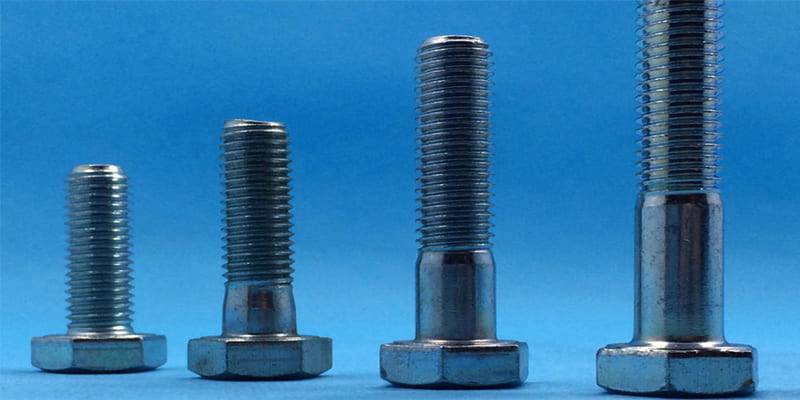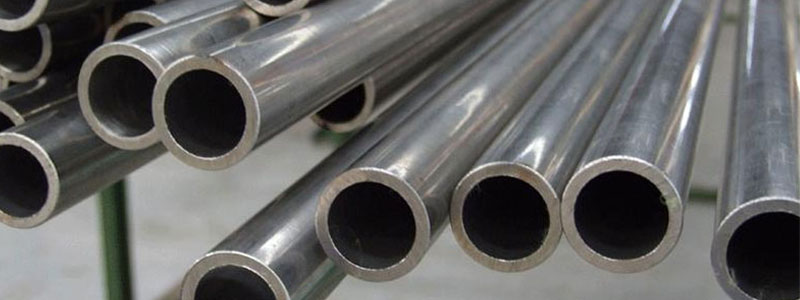For improved corrosion characteristics, stainless steel is an alloy of low carbon steel and chromium. Stainless steel is for the price, highly corrosion resistant. As the anti-corrosive properties of the metal are intrinsic, if scratched during installation or use, it will not lose this resistance.
That stainless steel is stronger than standard steel is a common misconception. Many stainless steel alloys cannot be hardened by heat treatment due to their low carbon content. Therefore the stainless alloys used in bolts are marginally stronger than un-hardened steel relative to ordinary steel but considerably weaker than hardened steel fasteners. Stainless fasteners are prone to seizing up during installation, a condition known as galling unless great care is taken. While some grades are slightly magnetic, most stainless steel fasteners are much less magnetic than standard steel fasteners.
What are the different grades of Stainless Steel Fasteners?
18-8 Stainless Steel Fastener
304-grade stainless steel, which is the most commonly used and versatile austenitic type of stainless steel, is 18/8 stainless steel. The 18/8 numbers reflect the 18 percent chromium and 8 percent nickel composition of this steel, making it very resistant to corrosion and oxidation. 18/8 stainless steel is also very durable and can easily be made. It is quick to clean the metal and it is available in several appearances and finishes.
Stainless Steel 316 Fastener
The 316 grade is a molybdenum-bearing austenitic stainless steel that contains 8% nickel, 18% chromium, and 2-3% molybdenum. The higher nickel and molybdenum content enables this grade to display better overall corrosion resistant properties which are particularly true in chloride environments in pitting and crevice corrosion. Moreover, Alloy 316 offers outstanding strengths of high temperature tensile and stress rupture, as well as outstanding weldability. Like 316 stainless steel screws, 316 stainless steel washers, and 316 stainless steel nuts, Fastener Solutions offers this alloy grade.
Stainless Steel 410 Fastener
SS 410 Fasteners are used where the ideal stiffness, air or furnace cooling is tempered. Furthermore, the tempering of our Alloy 410 Fasteners in the 750 Degree F-1050 Degree F range results in reduced impact strength and slightly decreased corrosion resistance. For petroleum fractionating systems, bolts, screws, bushings and nuts, shafts, pumps and valves, gas turbines, mine ladder rungs, and so on, these Grade 410 fasteners are also used.
In both the annealed and hardened settings, our Type 410 Fasteners are magnetic and are typically used for applications involving mild corrosion, high strength, and heat resistance. Slow regulated cooling from 1500 degrees F / 1600 degrees F for solution annealing and heat to 1700 degrees F / 1850 degrees F for hardening of AISI 410 fasteners, after quenching in air or oil. By all standard methods, the 410 Stainless Steel Fasteners are readily welded, where post-weld annealing is recommended to ensure optimum ductility.








